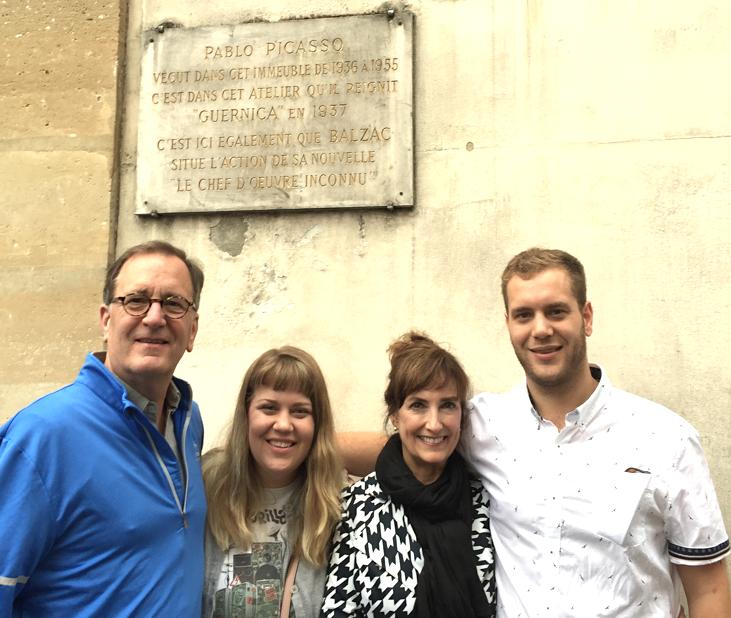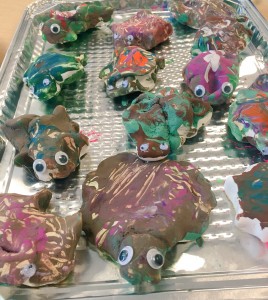
I find myself remembering in bits and pieces. The peeling paint of an ancient wooden door, the crunch of toasted bread smeared with butter, the gears of the glass elevator in our hotel lobby. My grant trip to Paris was an intense whirlwind that ended as quickly as it began. My family and I left on a Friday night and caught the red-eye from ATL to CDG. Fighting jet-lag and work-week exhaustion, we landed Saturday morning intent on making the most of this amazing opportunity. Each day packed with tours, tickets, and best-laid plans, the week flew by so quickly that I have trouble remembering the whole.
Back at Trinity, I stand in the semi-darkness of morning carpool duty twiddling the metro ticket still in my coat pocket.
A small memory comes swimming forward:
My brother Jack and I hop off our bus tour early so that we can catch the Paris Saint-Germain vs. Bayern Munich game. He had been looking forward to this match the entire trip and it just so happened to fall on his birthday. We dash to the nearest metro station only to come to a complete halt. I should rephrase that: I come to a complete halt. Jack, on the other hand, is bouncing on his heels waiting for me to translate the enormous rail map that glows ominously in the underground station. It is agonizing for him to wait while my brain decodes the French. Three days into our trip and I am slowly squeaking back into my language skills.
Another memory surfaces, sparked by Jack’s anticipation:
My dad, my step-mother, Jack, and I are in the basement of the Louvre. We have somehow made our way to the Egyptian antiquities wing and we are so far from the beaten path that the museum placards no longer provide English descriptions alongside the French. Jack points to a mummified head whose face is coated in gold leaf and asks, “That’s real, isn’t it?” Day four and I still have enough younger brother patience to keep from snapping back, “Of course it’s real, this is the Louvre.” Instead, I lean in to translate the long caption out loud to him. I speak slowly, reading each word carefully. Admittedly, I stumble over the complex museum terminology and completely skip the French version of the Egyptian words, but nonetheless, I am proud of my ability to wade through the paragraph. Finally, I stand up straight to meet his eyes and ask what he things about the mummy, but Jack has walked away in boredom: my translation too slow.
By day five and six I am proud to say had several successful all-French conversations. I cleared things up with the ticket-taker at Gare du Nord when our TGV tickets hadn’t been printed correctly. A French waiter and I discussed the aperitif my step-mother was looking for on the menu at a brasserie. I was even able to make a disgruntled taxi driver laugh when I explained that I often get my left and my right mixed up, no matter the language.
Little recollections edge back into my mind while I shower or walk the dog. A slow trickle that surprises me each time a family member calls to reminisce or a co-worker asks if I got to see their favorite spot. These become daily reminders to keep sacred my interests. Interests in art, language, and travel that help nourish my creativity and fuel my teaching. I look forward to welcoming every little memory as it resurfaces.
Learner, Thinker, Writer: Nina Chamberlain serves the Trinity School community as the EED art teacher.


